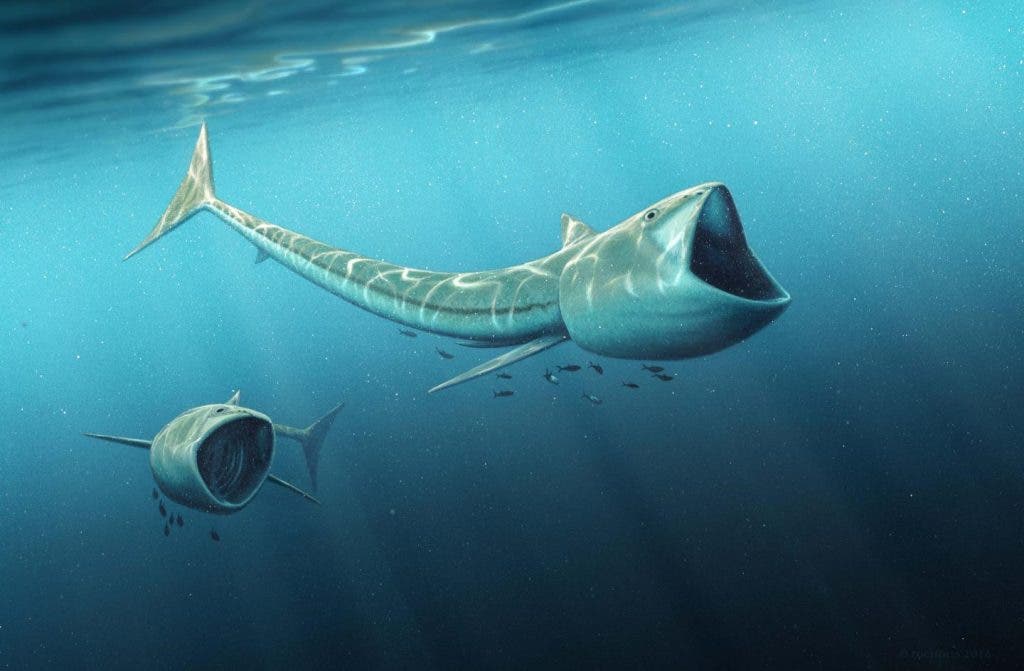They may have had huge mouths, but they fed on plankton – an international team of researchers has found evidence of two new plankton-eating fossil fish species. The two species lived in the Cretaceous period, about 92 million years ago.
No great extinction or burst of diversity separated the Cretaceous from the Jurassic Period that had preceded it. In some ways, things went on as they had. Dinosaurs great and small still roamed the Earth, pterosaurs and early birds flapped their wings, and marine reptiles hunted ammonites and belemnites in the seas. But not all large marine creatures hunted. Kenshu Shimada, a paleobiologist at DePaul University described two new species from the Rhinconichthys, one from England and one from North America.
Rhinconichthys was thought to be very rare, but considering that another fossil from Japan was also re-described, it seems this wasn’t so much the case.
“I was in a team that named Rhinconichthys in 2010, which was based on a single species from England, but we had no idea back then that the genus was so diverse and so globally distributed,” said Shimada.
Rhinconichthys was estimated to be more than 6.5 feet and fed on plankton. It was one of the largest bony fish to ever roam the Earth. Its most distinctive characteristic was the large mouth and its unusual structure. A pair of bones called hyomandibulae formed a massive oar-shaped lever to protrude and swing the jaws open extra wide, like a parachute, in order to receive more plankton-rich water into its mouth. This type of feeding still exists today, in manta rays and whales.
“Based on our new study, we now have three different species of Rhinconichthys from three separate regions of the globe, each represented by a single skull,” Shimada noted. “This tells just how little we still know about the biodiversity of organisms through the Earth’s history. It’s really mindboggling.”
Journal Reference: Highly specialized suspension-feeding bony fish Rhinconichthys (Actinopterygii: Pachycormiformes) from the mid-Cretaceous of the United States, England and Japan.










